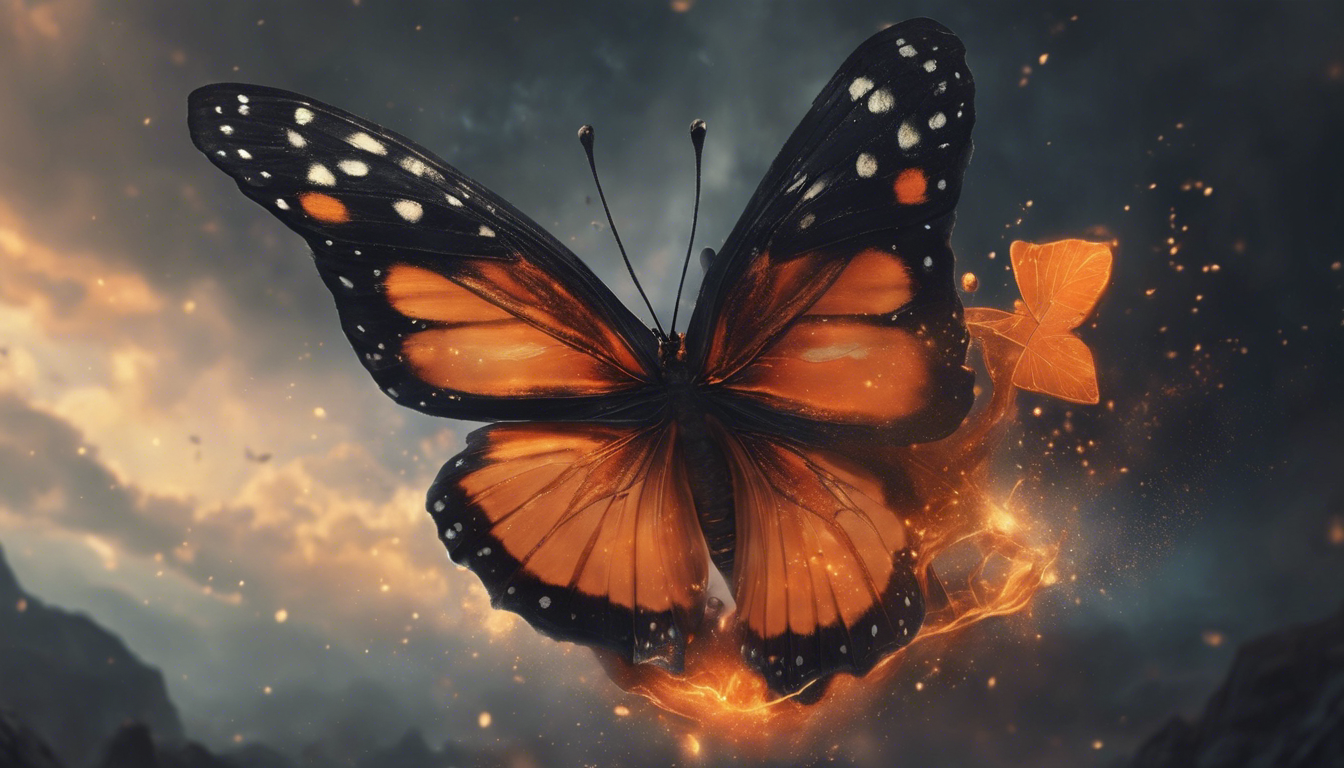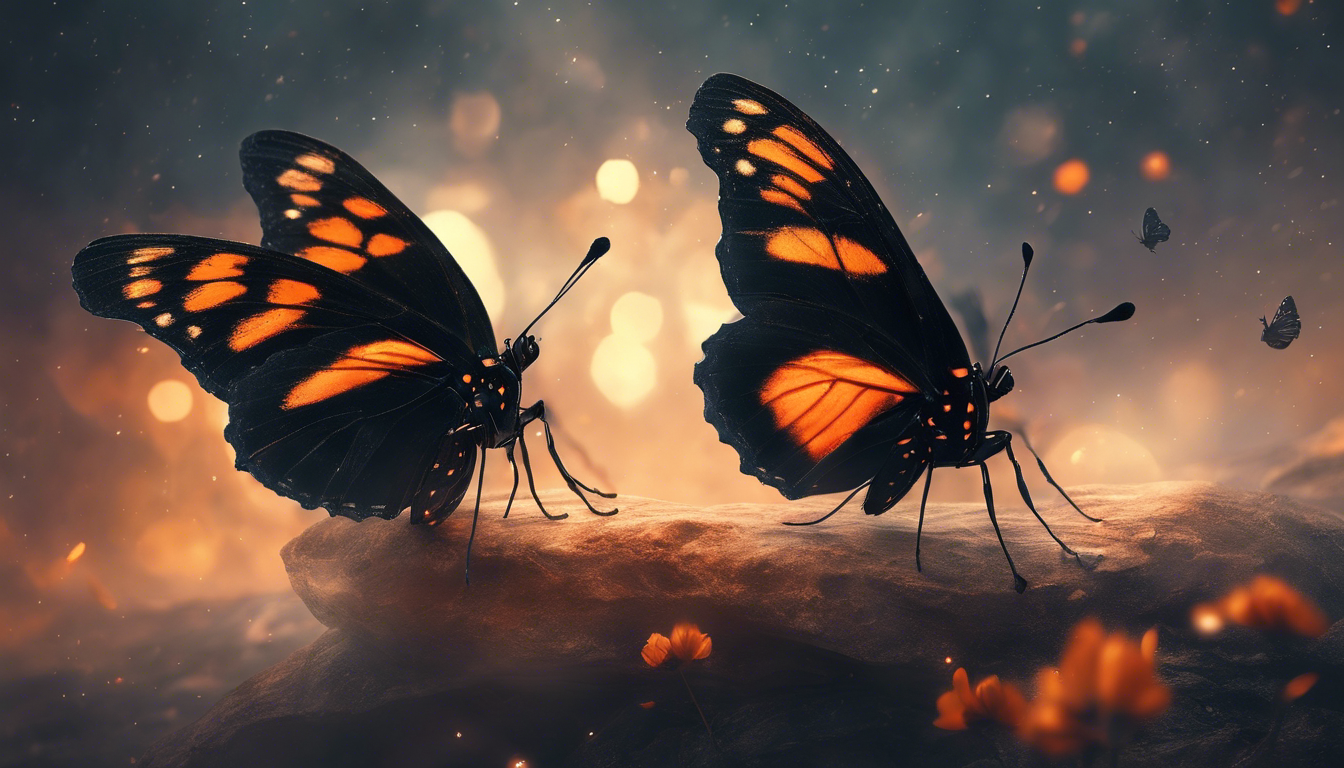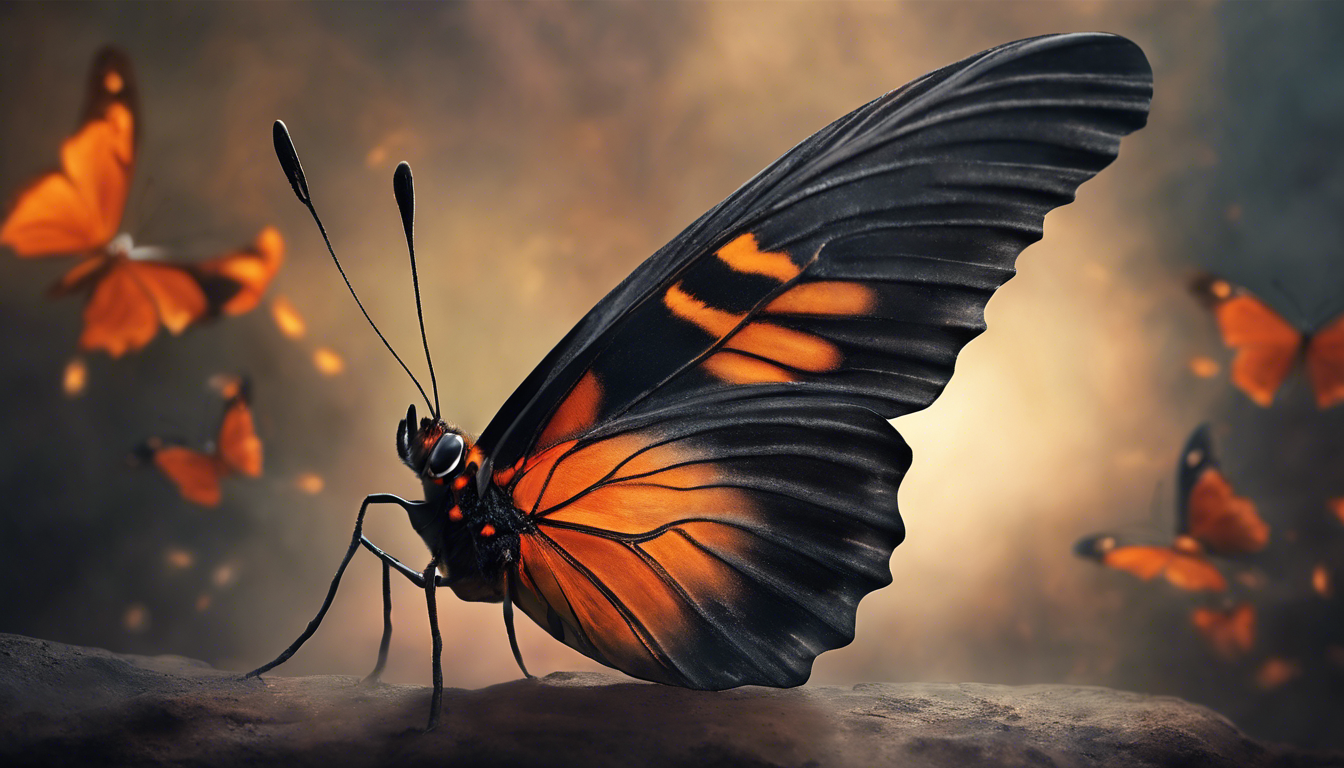The Appearance of the Black and Orange Butterfly
Black and orange butterflies are a stunning sight to behold with their vibrant colors and graceful flight patterns. These butterflies belong to the family Nymphalidae and are commonly found in various parts of the world, adding a touch of beauty to gardens, parks, and natural habitats.
Physical Characteristics
The black and orange butterfly is easily recognizable by its striking color combination. The wings typically feature a deep black hue with vibrant orange markings that vary in pattern and intensity depending on the species. Some may exhibit additional colors like white or blue, enhancing their overall appearance.
Behavior and Habitat
Despite their small size, black and orange butterflies are known for their agile and acrobatic flight. They can often be seen fluttering gracefully from flower to flower, feeding on nectar with their long proboscis. These butterflies prefer sunny areas with abundant flowers and vegetation, making them a common sight in gardens and meadows.
Symbolism and Significance
In many cultures, black and orange butterflies are associated with various symbols and meanings. They are often seen as a representation of transformation and change, as the butterfly undergoes a metamorphosis from a caterpillar to a beautiful winged creature. Seeing a black and orange butterfly is believed to bring good luck and positive energy.
Overall, the appearance of the black and orange butterfly is a sight to marvel at, showcasing the wonders of nature’s beauty and the intricate patterns found in the wildlife around us.
Habitat and Distribution of the Black and Orange Butterfly

Habitat of the Black and Orange Butterfly
The black and orange butterfly, scientifically known as Papilio cresphontes, is a species commonly found in North America. This beautiful butterfly thrives in a variety of habitats, including woodlands, meadows, and gardens. Their preferred environments are those rich in nectar-producing flowers where they can feed and lay their eggs.
Distribution of the Black and Orange Butterfly
The distribution of the black and orange butterfly spans across the United States and parts of Mexico. They can be found in regions with a temperate climate, where there is an abundance of their favorite host plants such as citrus trees and wildflowers. Some of the states where this butterfly is commonly sighted include Texas, Florida, and California.
Behaviour and Adaptations
The black and orange butterfly exhibits interesting behaviors and adaptations that help them survive in their habitats. They are known for their mimicry patterns, which serve as a defense mechanism against predators. Additionally, these butterflies have a long proboscis that enables them to reach deep into flowers for nectar.
During the mating season, male black and orange butterflies engage in territorial behaviors to attract females. The females, on the other hand, carefully select host plants to lay their eggs on, ensuring the survival of their offspring.
Conservation Status
Due to habitat loss and the use of pesticides, the black and orange butterfly population has faced challenges in recent years. Conservation efforts are being made to protect their habitats and promote the planting of native host plants to support their survival. It is important to raise awareness about the conservation of these beautiful creatures to ensure their presence for future generations to enjoy.
Life Cycle and Behavior of the Black and Orange Butterfly

Butterflies are fascinating creatures that go through a remarkable transformation during their life cycle. The Black and Orange Butterfly, in particular, is a striking species known for its vibrant colors and graceful movements. Let’s delve into the intricate details of these beautiful insects and gain a deeper understanding of their life cycle and behavior.
Life Cycle of the Black and Orange Butterfly
The life cycle of the Black and Orange Butterfly consists of four main stages: egg, larva (caterpillar), pupa (chrysalis), and adult. The female butterfly typically lays her eggs on the underside of a leaf, choosing a plant that will serve as food for the emerging caterpillars. These eggs are tiny and usually spherical in shape.
Once the eggs hatch, tiny caterpillars emerge and start feeding on the host plant. The caterpillars go through several instars, shedding their skin as they grow. During this larval stage, the Black and Orange Butterfly caterpillars consume voraciously to fuel their growth and development.
As the caterpillar reaches its full size, it forms a chrysalis around itself, marking the beginning of the pupal stage. Inside the chrysalis, the caterpillar undergoes a remarkable transformation, turning into a butterfly through a process called metamorphosis. After a period of time, the adult butterfly emerges from the chrysalis, spreading its wings for the first time.
Behavior of the Black and Orange Butterfly
The Black and Orange Butterfly exhibits fascinating behaviors throughout its life cycle. As caterpillars, they display distinctive feeding patterns and often exhibit aposematism, using their bright colors to warn predators of their toxicity or bad taste. This defense mechanism helps deter potential threats.
Once they transform into butterflies, their behavior shifts to focus on reproduction. Adult Black and Orange Butterflies engage in courtship rituals, with males displaying elaborate flight patterns and pheromone release to attract females. After mating, females lay eggs to continue the life cycle.
Migration is another intriguing behavior observed in some populations of Black and Orange Butterflies. These butterflies may undertake long-distance journeys to find suitable breeding grounds or escape unfavorable conditions, showcasing their remarkable navigational abilities.
In conclusion, the Black and Orange Butterfly is a captivating species with a fascinating life cycle and behavior. By understanding these aspects, we can appreciate the beauty and complexity of these creatures that grace our gardens and natural landscapes.
Ecological Importance of the Black and Orange Butterfly

Role in Pollination
The black and orange butterfly plays a crucial role in the ecosystem as a pollinator. As these butterflies feed on nectar from flowers, they inadvertently transfer pollen from one flower to another, aiding in the fertilization process. This contributes to the reproduction of various plant species, ensuring biodiversity in the ecosystem.
Indicator of Ecosystem Health
The presence of the black and orange butterfly in an area can serve as an indicator of the ecosystem’s health. These butterflies are sensitive to environmental changes, such as pollution or habitat destruction. A decline in their population can signal underlying ecological issues that need attention to maintain the balance of the ecosystem.
Supporting Food Chains
The black and orange butterfly serves as a vital link in the food chain. As caterpillars, they are food for various predators such as birds and insects. When these butterflies reach adulthood, they, in turn, become prey for other animals. Their presence helps sustain the intricate web of interactions within the ecosystem.
Contribution to Genetic Diversity
By participating in pollination, the black and orange butterfly contributes to the genetic diversity of plant species. Through their foraging habits, they assist in creating new gene combinations, which are essential for the adaptation and evolution of plants over time. This genetic diversity is crucial for the resilience of ecosystems in the face of changing environmental conditions.
In conclusion, the black and orange butterfly plays a multifaceted and essential role in the ecosystem. From pollination to indicating ecosystem health and supporting food chains, these butterflies are pivotal for maintaining biodiversity and ecological balance. It is imperative to protect and conserve their habitats to ensure the continued well-being of not only the butterflies themselves but also the entire ecosystem they are a part of.


Article written by Dera
Greetings, I am Dera, a 35-year-old individual with a deep passion for spirituality. Through my website, I aim to share my insights and knowledge to help others on their spiritual journey. Join me on the path to inner peace and enlightenment.